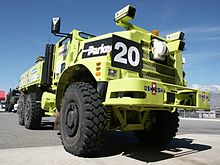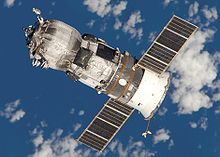

This article needs additional citations for verification. Please help improve this articlebyadding citations to reliable sources. Unsourced material may be challenged and removed.
Find sources: "Autonomous logistics" – news · newspapers · books · scholar · JSTOR (September 2007) (Learn how and when to remove this message) |
Autonomous logistics describes systems that provide unmanned, autonomous transfer of equipment, baggage, people, information or resources from point-to-point with minimal human intervention. Autonomous logistics is a new area being researched and currently there are few papers on the topic, with even fewer systems developed or deployed. With web enabled cloud software there are companies focused on developing and deploying such systems which will begin coming online in 2018.[needs update]
There are several subclasses of autonomous logistics vehicles:

Another example is the TerraMax autonomous truck based on Oshkosh's Medium Tactical Vehicle Replacement (MTVR) military truck platform. Most recently, TerraMax competed in the 2007 Darpa Urban Challenge. The MTVR was designed for the U.S. Marine Corps with a 70% off-road mission profile. TerraMax's unmanned ground vehicle kit does not interfere with the conventional operation of the vehicle. A robust sensor suite allows for 360-degree situational awareness around TerraMax. Elements of the autonomous navigation kit could be used to enhance driver awareness. The complete kit could be used in applications such as snow removal on airport runways.

Shipping containers handle most of today's intercontinental transport of packaged goods. Managing them in terms of planning and scheduling is a challenging task due to the complexity and dynamics of the involved processes. Hence, recent developments show an increasing trend towards autonomous control with software agents acting on behalf of the logistic objects. Despite of the high degree of autonomy it is still necessary to cooperate in order to achieve certain goals.[3]
The current trends and recent changes in logistics lead to new, complex and partially conflicting requirements for logistic planning and control systems. Due to the distributed nature of logistics, the usage of agent technology is promising. Due to the mobile nature of logistics, the usage of mobile agent technology is promising as well. Scenarios of usage of mobile agents in logistics has been envisioned.[4]
|
| |||||
|---|---|---|---|---|---|
| Aerial |
| ||||
| Ground |
| ||||
| Underwater |
| ||||
| Surface |
| ||||
| Space |
| ||||
| Other |
| ||||
| |||||